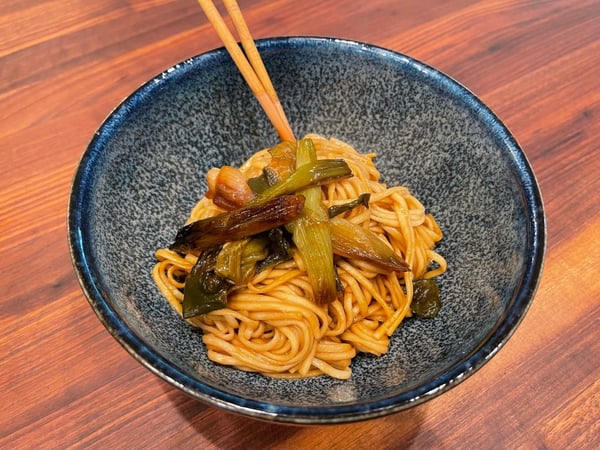Have you ever wondered what the difference is between all of the onions you see at the grocery store? How does a white onion differ from a yellow onion? When should you use a red onion over a Vidalia onion? What is a shallot, and is that the same thing as a scallion? You would not be alone in your confusion; we are asked these questions all of the time in our cooking classes. Let me share some of what I have learned about the world of alliums during my 40 plus years of professional cooking.
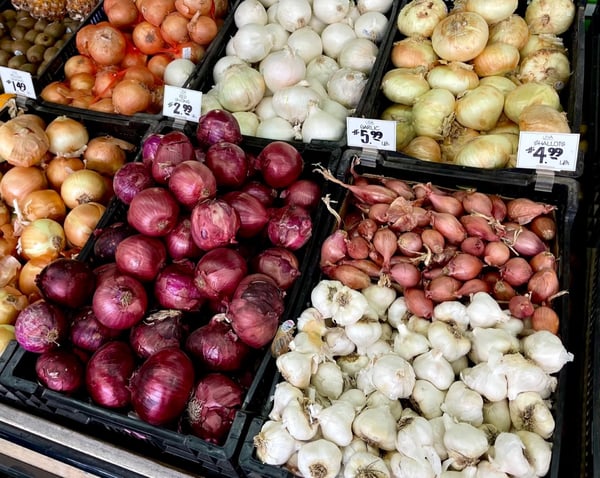 Alliums? Yes, onions are in the allium family. They come in many different forms, some ornamental and some edible. In my garden, I love to plant both edible and ornamental alliums because I find them all beautiful.
Alliums? Yes, onions are in the allium family. They come in many different forms, some ornamental and some edible. In my garden, I love to plant both edible and ornamental alliums because I find them all beautiful.
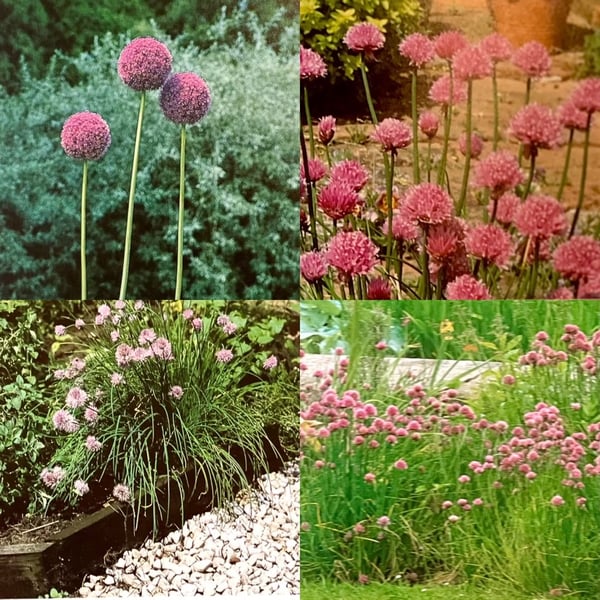 Although we are talking edible alliums, namely onions in this blog, garlic and chives are also in the allium family. You can distinguish alliums pretty easily in a garden or landscape, whether edible or ornamental, as they all have a distinctive purple or pink plume. The ornamental varieties do not produce an edible bulb so ornamental allium bulbs are not harvested but rather left in the ground to flower year after year. Onions, leeks, scallions, garlic and shallot bulbs are harvested and generally need to be replanted year after year.
Although we are talking edible alliums, namely onions in this blog, garlic and chives are also in the allium family. You can distinguish alliums pretty easily in a garden or landscape, whether edible or ornamental, as they all have a distinctive purple or pink plume. The ornamental varieties do not produce an edible bulb so ornamental allium bulbs are not harvested but rather left in the ground to flower year after year. Onions, leeks, scallions, garlic and shallot bulbs are harvested and generally need to be replanted year after year.
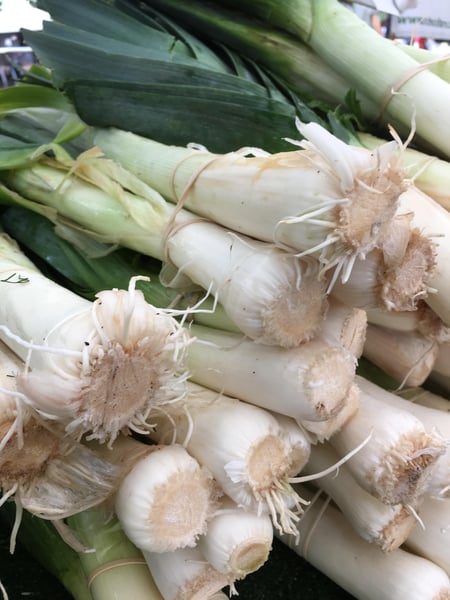
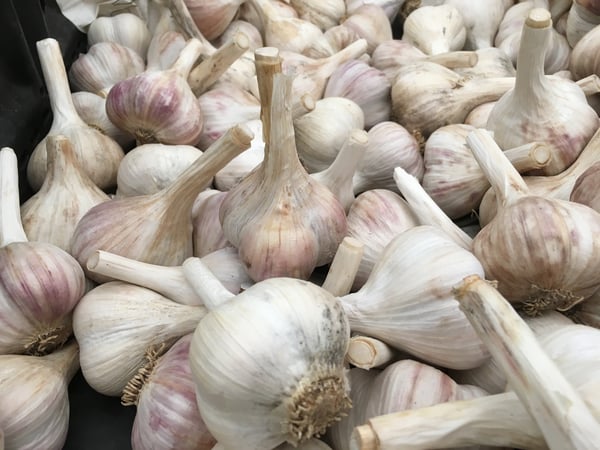 We will get into varieties in a moment, but let's first discuss how to select an onion when shopping at your local grocery store or farm stand. You will look for these same characteristics in any onion you purchase. Onions generally come packaged two ways, in a mesh bag or bulk and loose. These are the same onions, just packaged differently, so there really isn’t any difference between the two.
We will get into varieties in a moment, but let's first discuss how to select an onion when shopping at your local grocery store or farm stand. You will look for these same characteristics in any onion you purchase. Onions generally come packaged two ways, in a mesh bag or bulk and loose. These are the same onions, just packaged differently, so there really isn’t any difference between the two.
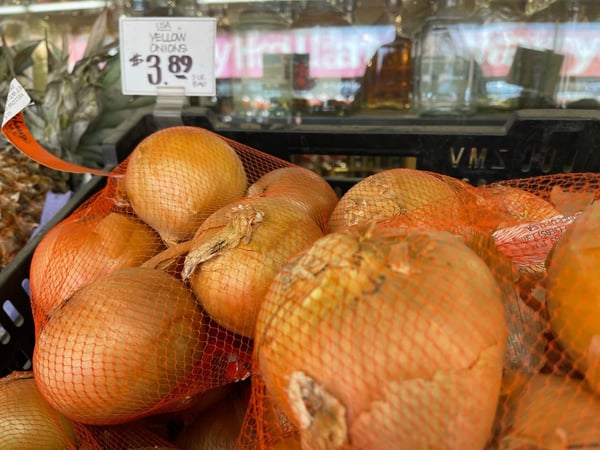 When shopping for onions, look for onions that are firm and heavy with a tight well-intact husk, free from bruises and blemishes. You should avoid onions that have sprouted. Sprouted onions have a green sprout just starting to emerge from the onion top and are on their very last leg, although not dangerous to eat they are very strong and pungent. Don’t confuse a sprouted onion with a fresh spring onion, a freshly picked spring onion will have a perky bright green top, like scallions (green onions) and leeks. A sprouted onion will have some yellow tint to its newly formed sprout and the onion will have started to soften and break down.
When shopping for onions, look for onions that are firm and heavy with a tight well-intact husk, free from bruises and blemishes. You should avoid onions that have sprouted. Sprouted onions have a green sprout just starting to emerge from the onion top and are on their very last leg, although not dangerous to eat they are very strong and pungent. Don’t confuse a sprouted onion with a fresh spring onion, a freshly picked spring onion will have a perky bright green top, like scallions (green onions) and leeks. A sprouted onion will have some yellow tint to its newly formed sprout and the onion will have started to soften and break down.
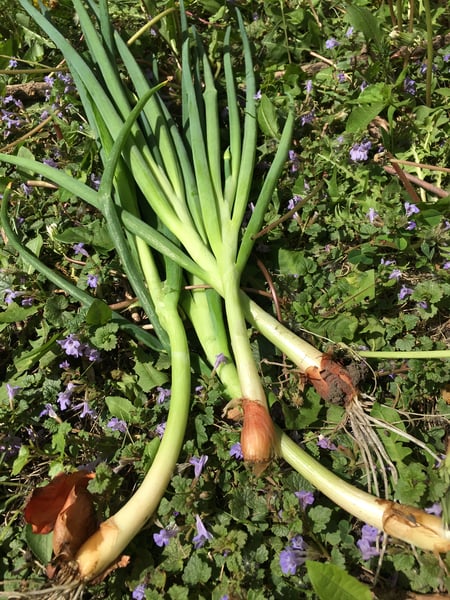 These are spring onions, not sprouting onions.
These are spring onions, not sprouting onions.
When I am selecting an onion for a recipe, I think of onion varieties in categories. I want to share my ideas with you in hopes that it will simplify selecting the right onion for your recipe. I also hope it helps when you run into new varieties not mentioned in this blog. I break down onion varieties in an unusual way, one you may not hear echoed in other blogs or articles on the subject. I’ll give you more insight into my reasoning if you read on. Let me first break onions down for you into three categories.
3 Categories of Onions
1. Wintering Onions: Shallots, yellow, white and red onions. Wintering onions are generally picked towards the end of summer. These onions are typically the onions that will be cured, a process of air drying the skin to remove moisture and develop a thick husk which aids in preservation. Wintering onions, if properly stored and cured, can last for up to a year.
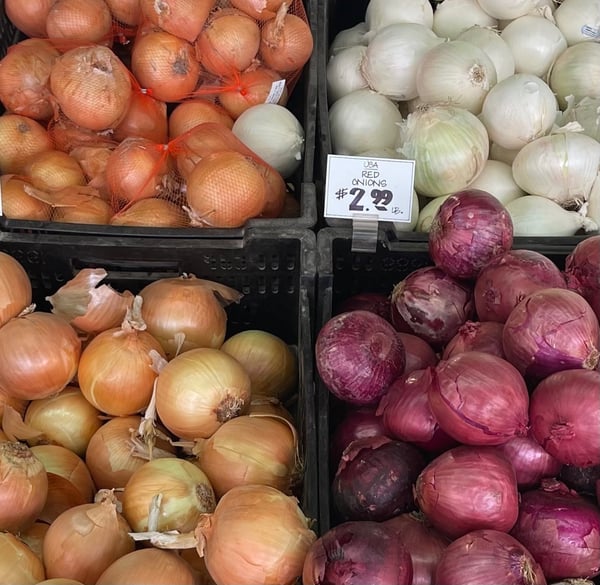 2. Spring Onions: Scallions or green onions, leeks or any onion harvested young in the spring or very early summer. Yellow, red, white, Vidalia or really any onions can be harvested before the onion bulb is fully matured in the spring with the green part still attached. Spring onions have the shortest life span, the green section of the onion will deteriorate the quickest. Once the greens have deteriorated, they can be removed and discarded and the white section can still be used. The smaller the onion, the shorter the life span. A scallion’s green section might last for a week or two while fleshy white part might last for a month. Leeks being much larger can last for months. Note the longer they are kept, the more intense the onion flavor.
2. Spring Onions: Scallions or green onions, leeks or any onion harvested young in the spring or very early summer. Yellow, red, white, Vidalia or really any onions can be harvested before the onion bulb is fully matured in the spring with the green part still attached. Spring onions have the shortest life span, the green section of the onion will deteriorate the quickest. Once the greens have deteriorated, they can be removed and discarded and the white section can still be used. The smaller the onion, the shorter the life span. A scallion’s green section might last for a week or two while fleshy white part might last for a month. Leeks being much larger can last for months. Note the longer they are kept, the more intense the onion flavor.
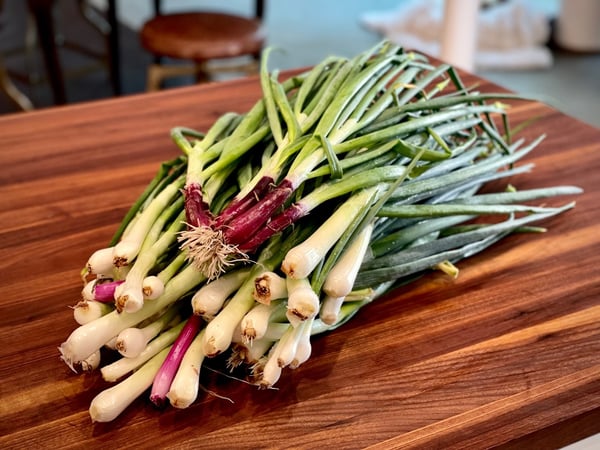
3. Summer Onions: Summer onions are harvested and eaten while still fresh and young without a long storage or curing time. Traditionally Vidalia, Walla Walla, Cipollini and Pearl Onions have a thinner husk and are not cured or stored as long as wintering onions. Vidalia, Walla Walla, Cipollini onions are naturally sweet varieties of onions.
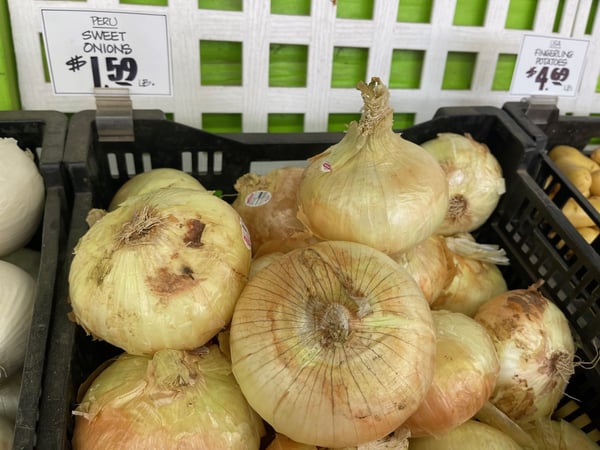 The reason I like to break down the categories of onions in this way is because each category of onion listed above can be cooked relatively interchangeably. Before I get into uses. let me take a moment to describe the characteristics of each of these categories.
The reason I like to break down the categories of onions in this way is because each category of onion listed above can be cooked relatively interchangeably. Before I get into uses. let me take a moment to describe the characteristics of each of these categories.
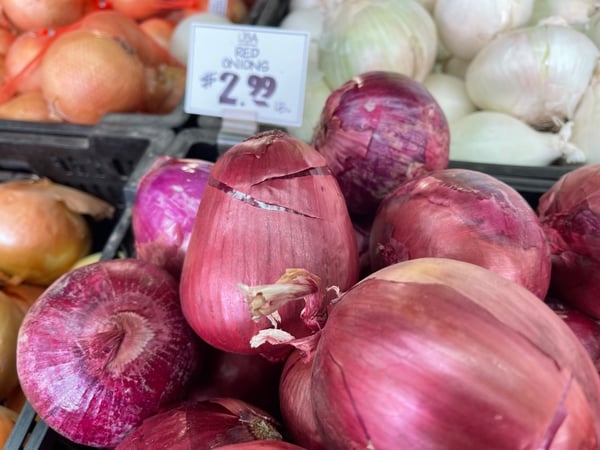 Wintering Onions are the hottest of all onions and the longer they are stored the hotter they get. Generally, these varieties of onions, at least in the Midwest where I live, are harvested in mid to late summer. These onions are then cured after harvest. Curing is a process of letting the skin on the onion dry out to create the husk. The husk acts as a protective layer and helps to keep the onion fresh for a very long time.
Wintering Onions are the hottest of all onions and the longer they are stored the hotter they get. Generally, these varieties of onions, at least in the Midwest where I live, are harvested in mid to late summer. These onions are then cured after harvest. Curing is a process of letting the skin on the onion dry out to create the husk. The husk acts as a protective layer and helps to keep the onion fresh for a very long time.
When you go to the grocery store or farmers market in August and buy a yellow, white or red onion and eat it that day it will be crisp, sweet and have a more tempered onion flavor. That same onion could be stored all winter long and sold next spring at your local grocery store. Next spring that same onion much more intense in flavor, less crisp and juicy. So, you may find you enjoy a yellow onion just picked in August in your fresh salsa or sliced to top your hamburger but you may find that same variety of onion too hot to use raw in April of the following year.
The one exception in the category is the shallot. Although shallots do have a thick husk and can be stored for a very long time, because it is a much smaller onion variety it usually stores for 4 to 6 months. Of the wintering onions, shallots are the sweetest innately but also because they aren’t stored as long as the other wintering onions.
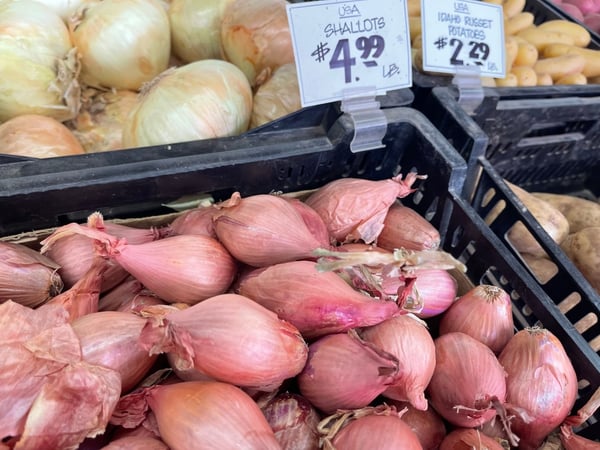 Spring Onions are harvested in the spring or early summer while young, tender and before they have been exposed to the extreme heat of the summer. The most distinct characteristic of the spring onions is that they all have green tops still attached. They are also the mildest of all the onions. Think of it this way, the green tops will not stay green and fresh for long so if your onion has a fresh, crisp and bright green top, the onion is also fresh and young. Fresh and young onions, scallions and leeks in the spring are at their sweetest and mildest. Wintering onions can be picked in the spring before the bulb is fully formed and with green tops still attached. Whatever variety of onion you are using, if it has a green top still attached it is going to be very fresh and the sweetest and mildest expression of that onion it will ever be.
Spring Onions are harvested in the spring or early summer while young, tender and before they have been exposed to the extreme heat of the summer. The most distinct characteristic of the spring onions is that they all have green tops still attached. They are also the mildest of all the onions. Think of it this way, the green tops will not stay green and fresh for long so if your onion has a fresh, crisp and bright green top, the onion is also fresh and young. Fresh and young onions, scallions and leeks in the spring are at their sweetest and mildest. Wintering onions can be picked in the spring before the bulb is fully formed and with green tops still attached. Whatever variety of onion you are using, if it has a green top still attached it is going to be very fresh and the sweetest and mildest expression of that onion it will ever be.
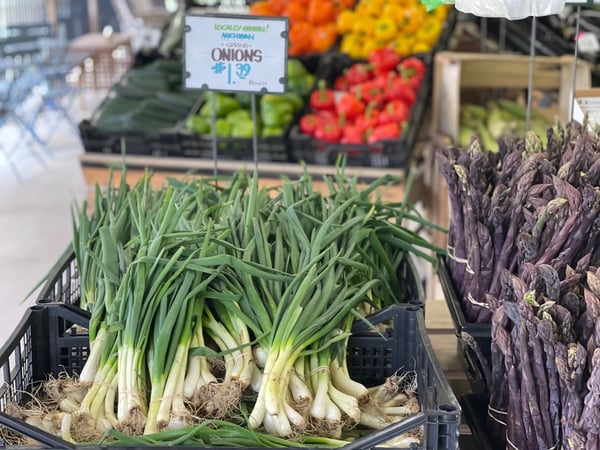 Summer Onions are both categorized by variety and by season. Vidalia, Walla Walla, Cipollini varieties are inherently sweet onions. These varieties have become extremely popular and for good reason. They are good cooked but they are very mild and are excellent eaten raw. These varieties of onion have a thinner husk and therefore don’t store as well as wintering onions. Since these varieties cannot be stored as long as wintering onions, we don’t run into the same issue with them getting hotter over time. You wont see as many variables in flavor in these sweet varieties of onions as you will wintering onions.
Summer Onions are both categorized by variety and by season. Vidalia, Walla Walla, Cipollini varieties are inherently sweet onions. These varieties have become extremely popular and for good reason. They are good cooked but they are very mild and are excellent eaten raw. These varieties of onion have a thinner husk and therefore don’t store as well as wintering onions. Since these varieties cannot be stored as long as wintering onions, we don’t run into the same issue with them getting hotter over time. You wont see as many variables in flavor in these sweet varieties of onions as you will wintering onions.
When we harvest yellow, white or red onions in the summer and eat them immediately they are also quite sweet. This is likely what causes the most confusion about onions. Why is a white onion sometimes sweeter than other times? In the right conditions, a white onion that is freshly picked can be very sweet. A white onion stored for a year will be extremely hot. This can also explain why sometimes onions make you cry and sometimes they don’t. The onions that were stored over the winter and purchased in the spring will be the hottest and make you cry like the Dickens, while summer onions are so mild you can eat them like an apple…well at least my father used to do that!
The best overall advice I can give in selecting the right onion for a recipe is this: onions are a seasonal crop, use the spring onions in the spring, the summer onions in the summer and the winter onions in the winter. The type of cooking you do during the different seasons lends itself to the variety of onion that is available at the time. You can’t get spring onions in the summer and you can’t get summer onions in the winter. You can get wintering onions all year long, just know that they are at their hottest in the early spring (remember they have been stored all winter) and at their sweetest in the summer.
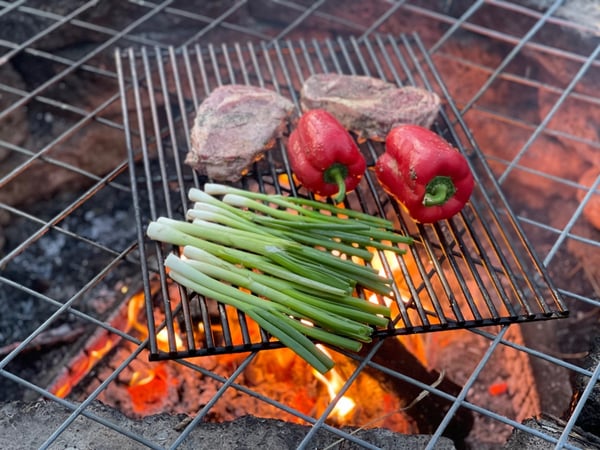 Wintering Onions are the hottest, strongest variety of onion, therefore they stand up to cooking really well. These hot beasts are going to add the most flavor to your cooked dishes and you can use them interchangeably except where color matters.
Wintering Onions are the hottest, strongest variety of onion, therefore they stand up to cooking really well. These hot beasts are going to add the most flavor to your cooked dishes and you can use them interchangeably except where color matters.
- Red onions will tint your cream of broccoli soup or chicken soup red, so when you don’t want a red tint, stick to yellow and white for cooking. Red onion with braised red cabbage enhances the color of both.
- Wintering onions are fantastic for roasting, they stand up to the intense cooking and add great flavor.
- Yellow and white onions are used in stocks, soups and stews.
- When you want to caramelize an onion, I prefer wintering onions to summer onions since they add more flavor. The older the onion the more carbohydrates the onion contains, the carbs are what allow for caramelization.
- We don’t use a lot of raw onion in the winter, but on the occasion when you want the texture of a raw onion in the winter try these tips:
- Pickle the onion, red onions are especially pretty pickled.
- Soak the sliced onion in a little cold salted water to draw out some of the heat.
- Meatloaf and meatballs.
- Braised meats and dishes like pot roast, coc au vin, and carnitas.
- Liver and onions, sausage and peppers.
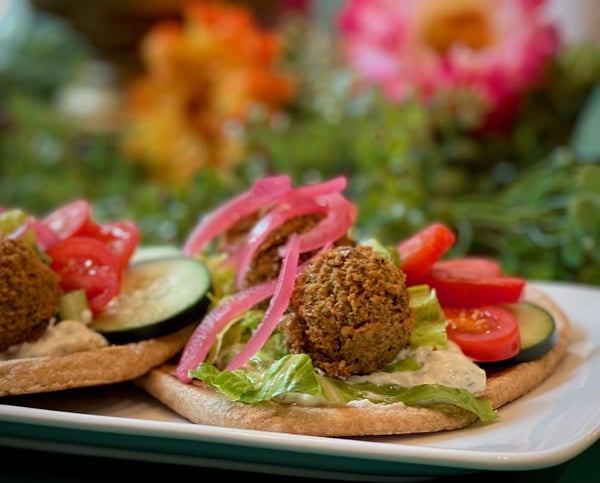 Falafel with Pickled Red Onion
Falafel with Pickled Red Onion
Spring Onions offer both a beautiful color and delicate flavor. They are not as sweet as a summer onion, but I think of them more as a more delicate version of a winter onion. I think the most common question I get about spring onions is whether you can eat the green part. I say this, as long as they are tender and fresh use them! Traditionally leek tops can be used in a stock or to stuff a roasted chicken but are not eaten as a general rule because they are so fibrous. Here are some ways to use spring onions:
- Use raw and sliced in salads
- Garnish
- Marinades and salad dressings
- Chinese, Thai, Korean cuisines
- Crudité
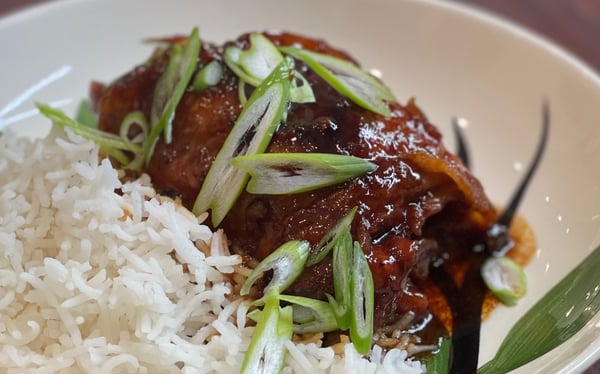
Summer Onions offer both a mild and sweet onion flavor to dishes. These varieties short storage time not only keep them sweet, it keeps them crunchy. Summer onions provide a beautiful crisp texture and sweet onion flavor to your menu.
- Use them raw in salads, salsas and on sandwiches.
- Canning recipes such as Chicago Giardiniera, salsa, pickles, onion jam and stewed tomatoes. For canning purposes, we want to use the freshest ingredients possible.
- Summer onions are fantastic for the grill, but I like spring and winter onions on the grill as well.
- Marinades such as jerk and chimichurri
- Onion rings and blooming onions
Lastly, I want to leave you will this: as a general rule you can pretty much use any onion for any recipe. If the onion you have on hand it a little hot for the recipe you are making, use less. If it is a little mild for the recipe, use a little more. Onions are one of the most important ingredients in cooking, they are used internationally to add flavor and texture to raw and cooked foods. It may seem confusing to see all the varieties in the grocery store, but know you know you can use them interchangeably.
It is currently wintering onion season, and you will see us use them in almost every cooking class. They are an essential element of cooking but will be especially highlighted in our upcoming:
- Virtual Soups and Stews Workshop on Saturday, October 29 at 10am CST,
- Braising Boot Camp coming back in 2023,
- and of course, in our Culinary Boot Camp series. We just added a week-long class over the holidays!


